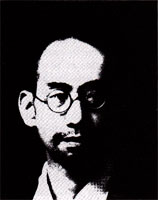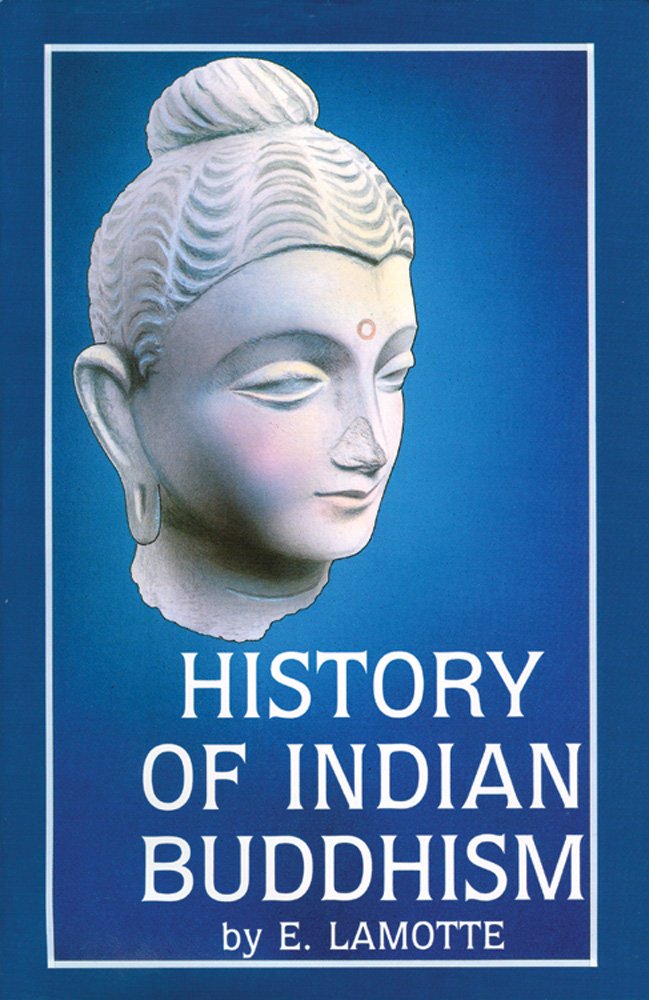History of Indian Buddhism: from the Origins to the Saka Era
By Etienne Lamotte. Translated by Sara Webb-Boin, under the supervision of Jean Dantinne.
Publications de l’Institut Orientaliste de Louvain: Louvain, 1991.
870 pp. $95.00 (paperback).
Etienne Lamotte (1903-1983) was a renowned scholar of Buddhism and disciple of La Vallee-Poussin, the founder of the Belgian school of Buddhist studies. His international reputation as an editor and translator of Mahayana texts is beyond question. However, the crowning achievement of his long and distinguished career will always be his Histoire du Buddhism Indien (1958), now available in Sara Webb-Boin’s translation.
History of Indian Buddhism provides students of Buddhism who lack a reading knowledge of French with an incredibly detailed account of the first six centuries of Buddhism. An additional chapter, devoted to the origin and development of Buddhist sects in ancient India, includes a summary of the formation of the Buddhist languages: early Magadhi, Pali, Buddhist hybrid Sanskrit, etc. Lamotte’s tome is a model of historiography, covering the material organization of the sangha, the evolution of rituals and traditions, the development of Buddhist sculpture and architecture, the emergence of legends—and all of this against the historical background of Buddhist expansion in ancient India. As Jean Dantinne suggests in the foreword, History of Indian Buddhism is the most remarkable product of Lamotte’s most “phenomenal memory.”
Although the core of the work remains a classic of Buddhist studies, a team of scholars has supplemented Lamotte’s bibliography, added an index of technical terms and revised geographical maps in order to reflect the advances made in more recent Buddhist scholarship. These additions are indeed appreciated, but remind us somewhat nostalgically that although the study of Buddhism progresses, pioneers of Buddhology like Lamotte have established a standard for breadth and depth of scholarship that remains unchallenged by later generations of scholars.
An Inquiry into the Good
By Kitaro Nishida.
Translated by Masao Abe and Christopher Ives.
Yale University Press: New Haven, 1990. 1
84 pp. $25.00 (hardcover).
Nishida Kitaro
By Nishitani Keiji, translated by Yamamoto Seisaku and James Heisig.
University of California Press: Berkeley and Los Angeles, 1992.
200 pp. $25.00 (hardcover).
Americans new to Buddhist practice are certainly familiar with the westward migration of ideas, but the growing interest in Nishida bears witness to a counter-current of philosophical flow, dialogue, and a sort of East-West synthesis embodied by Nishida and the Kyoto school of philosophy. Masao Abe and Christopher lves’ translation of Nishida’s first work, An Inquiry into the Good (Zen no kenkyo), provides a special opportunity for readers who have found the meaning and implications of such Asian philosophical concepts as “nothingness” (shunyata) indigestible.

An Inquiry into the Good was published in 1921, during Nishida’s tenure as a professor of philosophy at Kyoto University (1913-1928). It is perhaps the most accessible of his works and also the point of departure and foundation for his later philosophical meditations and essays. At the time he was writing An Inquiry into the Good, Nishida was also engaged in Zen practice, and although Zen is not explicitly discussed in the text, its influence is undeniable. It would, however, be incorrect and misleading to consider the book merely a record and elaboration of his Zen experience. As Abe says in his introduction:
As both a philosopher and a Zen Buddhist, Nishida transformed Zen into philosophy for the first time in the history of this religious tradition and, also for the first time, transformed Western philosophy into a Zen-oriented philosophy. In Nishida, then, the East-West encounter took a remarkable form.
Nishida’s synthetic orientation provides an extraordinary foundation and invitation for Western thought to approach Asian philosophical concepts that have proved impenetrable to many of our best academic philosophers. Throughout his discussion Nishida amplifies his ideas by touching on the works of Aristotle, Duns Scotus, Kant, Hegel, Hobbes, James, Dewey, and many other Western philosophers.
The late Nishitani Keiji’s Nishida Kitaro, translated by Seisaku and Heisig, is an excellent companion to Abe and Ives’ translation of An Inquiry into the Good. Nishitani’s work is part intellectual biography and part philosophical commentary, first providing a portrait of Nishida and then an overview of his thought, especially as it is expressed in An Inquiry into the Good. Both translations will undoubtedly speed Nishida’s inevitable recognition in the West and assumption of his proper place in the history of philosophy.

Ethics of Tibet
Bodhisattva section of Tsong-kha-pa’s La rim chen mo.
Translated by Alex Wayman.
SUNY Press: Albany, 1991.
279 pp. $16.95 {paperback}.
As mentioned in the Dalai Lama’s foreword to this book, the La rim chen mo (“Great Exposition of the Stages of the Path”) is among the most popular and influential of the many works by Tsong-kha-pa. Completed in 1402, the La rim chen mo is a remarkably insightful and encyclopedic treatise written during the so-called “golden age” of Tibetan culture. According to the Dalai Lama, the titular head of the Gelugpa school of Tibetan Buddhism,
What distinguishes [the La rim chen mo] as one of the principal texts of Mahayana Buddhism is its scope and clarity. It expounds the entire path, from the way one should rely on a spiritual teacher, which is the very root, right up to the attainment of Buddahood, which is the final fruit. The various stages of the path are presented so clearly and systematically that they can be easily understood and are inspiring to put into practice.
In Ethics of Tibet, Alex Wayman, the highly regarded scholar of Sanskrit and Tibetan Buddhism, has translated the Lam rim chen mo section dealing with the bodhisattva’s practice of the six Perfections; translated here as the Perfections of giving, morality, forbearance, striving, meditation, and insight. The translator informs us that he completed his first draft of this project in the late fifties. The “draft” translation remained mostly unattended until the publication of his translation of the last two sections of the Lam rim chen mo under the title Calming the Mind and Discerning the Real (1978). In these final sections, Tsong-kha-pa greatly expands his discussion of the last two of the six Perfections, meditation (dhyana) and insight (prajna), which are mostly unelaborated in the bodhisattva section. The “ethics” of Ethics of Tibet are Tsong-kha-pa’s exposition of the rules for general Mahayana practice, while the “rules” for Vajrayana practice are introduced in the final two sections of the Lam rim chen mo mentioned above. Of course, one must remember that as an “ethical” program or theory of morality, the bodhisattva practice described here is predicated on the aim or goal of the bodhisattva: the liberation of oneself and others.
Thank you for subscribing to Tricycle! As a nonprofit, we depend on readers like you to keep Buddhist teachings and practices widely available.
